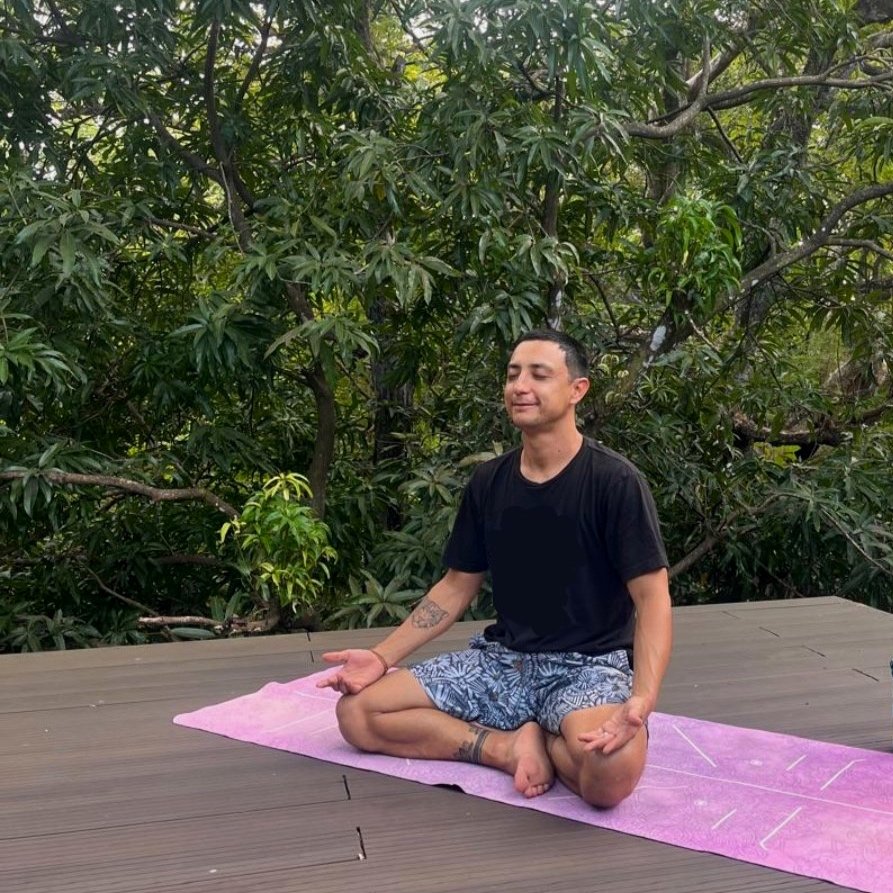
Pranayama
The practice of Pranayama (breathing techniques) has a wide range of benefits that become apparent as you practice regularly. Over the days and weeks, these benefits tend to become more noticeable, both physically and mentally and emotionally. Here are some of the main benefits you can expect as you incorporate pranayama into your routine.
Benefits from Pranayama
-
✺ Connection with the present
By focusing your attention on your breath, you develop a greater capacity to be present in the moment, reducing the tendency to worry about the future or dwell on the past. This promotes a sense of ongoing well-being and greater satisfaction in daily life.
-
✺ Strengthening the immune System
Practicing pranayama regularly can strengthen your immune system by lowering cortisol levels (the stress hormone), which can make you more resilient to illnesses.
-
✺ Improves circulation and oxygenation
By improving respiratory efficiency, pranayama increases the flow of oxygen to all the cells in your body, enhancing circulation and promoting greater vitality. This can have positive effects on your overall energy and physical well-being.
-
✺ Stress & anxiety reduction
The conscious practice of breathing activates the parasympathetic nervous system, which induces a state of deep relaxation. Over time, you will notice that your stress levels decrease, and you will have a greater ability to handle difficult situations with calmness and clarity.
-
✺ Improves lung capacity
Pranayama strengthens the respiratory muscles, increases lung capacity, and improves breathing efficiency. This will help you feel more energized
Pranayama strengthens the respiratory muscles, increases lung capacity, and improves breathing efficiency. This will help you feel more energized and enhance your overall physical endurance.
-
✺ Improvement in sleep quality
The regular practice of pranayama, especially exercises like Nadi Shodhana (alternate breathing) or Bhramari (bee breath), can help calm the mind before sleep, promoting deeper and more restorative rest.

You will learn different pranayama techniques.
Nadi Shodhana, or alternate breathing, balances the energies of the body and calms the mind.
Kapalabhati consists of quick and short breaths that purify the lungs and energize the mind.
Ujjayi, known as the "victorious breath," is performed with a deep and resonant breath that promotes concentration and well-being.
Bhramari uses the sound of a buzz during exhalation, encouraging the reduction of stress and anxiety.
Bhastrika is a powerful breathing technique from the yoga tradition used to increase the vital energy of the body. Through rapid and deep inhalations and exhalations, this practice stimulates the nervous system, purifies the lungs, and oxygenates the blood.
Each of these practices contributes to a deeper connection with oneself, enhancing mental clarity and inner peace, essential elements in a conscious journey.
“As you practice pranayama, you are likely to experience a significant improvement in your physical, mental, and emotional well-being. The effects accumulate over time, so it’s important to be consistent. Daily practice can help you reduce stress, improve your overall health, boost your energy, and help you maintain a more stable emotional balance”
Edgardo Umaña
Pranayama Practice
True adventure is not only found in conquering mountains or challenging powerful rivers, but in the exploration of our own being through pranayama and stillness. By combining pure adrenaline with the conscious practice of breathing, we open a path towards a deep balance between body and mind.
The pranayama is not only technique, it is internal revolution; it is the bridge that unites the intensity of adventure with the absolute serenity of inner silence. In that combination is the true transformation, where adrenaline merges with calm and the heart beats with a clear and firm purpose.
Traveling with this philosophy, walking between adventures awakened by conscious breathing and sealed by meditation, is a call to break the cycle of routine, to wake up strongly and to rest deeply. Here, the journey becomes a sacred ritual for the body, mind and spirit.


